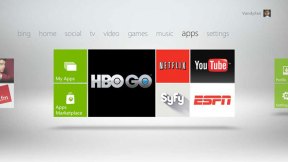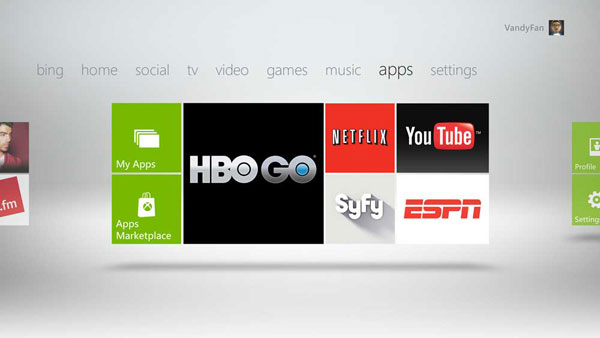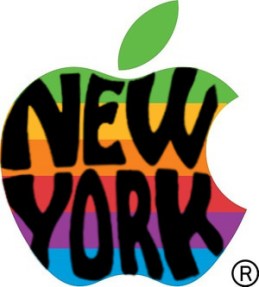
Mobile browser company Opera — which claims to be the world’s largest, with 160 million monthly users — today announced two more developments in its drive to make more money from mobile: today it is launching its own payment exchange for its Mobile Store app store; and it has named its first regional partner for the service, Yandex, which will become the preferred method of payment in Russia and the CIS.
The news is the latest in a week of mobile money and payment announcements — including the news that Facebook will also offer carrier billing for mobile users of its apps.
Sameer Merchant, VP of commerce services for Opera, tells us that the focus on payments is to drive more premium content downloads on the app store. To be clear, paid apps had already existed on the app store — people could pay with credit cards, PayPal and carrier billing in some regions. But this move will, Opera says, make the experience easier for people to use: “We are constantly looking for better ways to pay for premium content,” he says.
Part of the push, he says, will be to offer the most popular forms of mobile payments in specific regions. The first of these deals is with Yandex, the Russian Internet giant, whose Yandex.Money will now be the preferred payment method when a user visits the Opera Mobile Store.
Merchant tells me that Opera focused first on Yandex because Russia is one the company’s most popular markets, and Yandex.Money because that is one of the region’s most popular payment services. He notes that Opera has a number of other regions where its browser is popular, including China, India/Indonesia, South Africa/Nigeria, the U.S., U.K./Germany/France, and Brazil/Mexico/Argentina. These may well be the next targets for further local payments services.
The news today covers only payments for downloads but the intention is to extend that to the full set of payment services that you currently get on other app stores. Merchant says that in-app payments and subscription-based content are “on the roadmap.”
The Opera Mini browser — a free mobile web browser used by 160 million people — has partly grown so big because it is usable on a number of different platforms spanning both smartphones and feature phones. The Mobile Store currently offers 55,000 apps covering Android, Java, Symbian, BlackBerry and iOS platforms and Merchant tells me that Opera will also start to include web apps in the store later this year.
Since launching its Mobile Store last year, Opera has gradually been taking more of the operation under its wing. First launched as a white-label service with Appia — formerly known as PocketGear and funded in part by Eric Schmidt’s Tomorrow Ventures — Opera now runs the service itself using technology from Handster, a mobile app store company it bought in September 2011.
Opera has seen some good growth in its app store to date, with 30 million monthly visits, a 63 percent increase in page views (with now the average being five page views per user), more time spent on the site (it’s now at four minutes, growth of 199 percent), and 45 million monthly downloads.
The downloads per user, however, are still at the low end: 1.5 apps per month per user, judging by Opera’s figures.
This looks like just one step in Opera’s ambitions to do more with payments. A separate deal with InMobi’s SmartPay platform will see Opera looking to get involved in content payments in areas beyond its own Mobile Store and into the wider web when visited through Opera’s browser.
Source:http://techcrunch.com/2012/02/28/opera-app-store-yandex-payments/
The news is the latest in a week of mobile money and payment announcements — including the news that Facebook will also offer carrier billing for mobile users of its apps.
Sameer Merchant, VP of commerce services for Opera, tells us that the focus on payments is to drive more premium content downloads on the app store. To be clear, paid apps had already existed on the app store — people could pay with credit cards, PayPal and carrier billing in some regions. But this move will, Opera says, make the experience easier for people to use: “We are constantly looking for better ways to pay for premium content,” he says.
Part of the push, he says, will be to offer the most popular forms of mobile payments in specific regions. The first of these deals is with Yandex, the Russian Internet giant, whose Yandex.Money will now be the preferred payment method when a user visits the Opera Mobile Store.
Merchant tells me that Opera focused first on Yandex because Russia is one the company’s most popular markets, and Yandex.Money because that is one of the region’s most popular payment services. He notes that Opera has a number of other regions where its browser is popular, including China, India/Indonesia, South Africa/Nigeria, the U.S., U.K./Germany/France, and Brazil/Mexico/Argentina. These may well be the next targets for further local payments services.
The news today covers only payments for downloads but the intention is to extend that to the full set of payment services that you currently get on other app stores. Merchant says that in-app payments and subscription-based content are “on the roadmap.”
The Opera Mini browser — a free mobile web browser used by 160 million people — has partly grown so big because it is usable on a number of different platforms spanning both smartphones and feature phones. The Mobile Store currently offers 55,000 apps covering Android, Java, Symbian, BlackBerry and iOS platforms and Merchant tells me that Opera will also start to include web apps in the store later this year.
Since launching its Mobile Store last year, Opera has gradually been taking more of the operation under its wing. First launched as a white-label service with Appia — formerly known as PocketGear and funded in part by Eric Schmidt’s Tomorrow Ventures — Opera now runs the service itself using technology from Handster, a mobile app store company it bought in September 2011.
Opera has seen some good growth in its app store to date, with 30 million monthly visits, a 63 percent increase in page views (with now the average being five page views per user), more time spent on the site (it’s now at four minutes, growth of 199 percent), and 45 million monthly downloads.
The downloads per user, however, are still at the low end: 1.5 apps per month per user, judging by Opera’s figures.
This looks like just one step in Opera’s ambitions to do more with payments. A separate deal with InMobi’s SmartPay platform will see Opera looking to get involved in content payments in areas beyond its own Mobile Store and into the wider web when visited through Opera’s browser.
Source:http://techcrunch.com/2012/02/28/opera-app-store-yandex-payments/






































